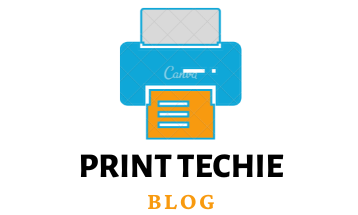It is important to choose the right paper for the sublimation process to get high-quality prints. Two popular options for sublimation paper are butcher paper Vs parchment paper. Butcher paper is often used in the food industry and is known for being strong and durable. Parchment paper is a type of non-stick baking paper that can resist heat and keep food from sticking. In this article, we will compare the two types of paper and explore their suitability for use in sublimation, including their cost, durability, heat resistance, and non-stick properties.
Comparison of Butcher Paper Vs Parchment Paper for Sublimation:
Comparison of cost:
When it comes to cost, butcher paper is generally less expensive than parchment paper. This makes butcher paper a more cost-effective option for those on a budget.
Comparison of durability:
Butcher paper is generally more durable than parchment paper, making it suitable for use in the sublimation process for a longer period before needing to be replaced. Parchment paper, on the other hand, may become wrinkled or distorted after multiple uses in the sublimation process.
Comparison of heat resistance:
Both butcher paper and parchment paper won’t burn easily, so they work well for the sublimation process. Parchment paper can handle high temperatures better than butcher paper.
Comparison of non-stick properties:
Parchment paper has excellent non-stick properties, making it easy to remove from the substrate after the sublimation process. This results in fewer wrinkles and distortions in the final print. Butcher paper, on the other hand, is not as non-stick and may be more difficult to remove from the substrate, resulting in wrinkled or distorted prints.
What exactly is Butcher Paper?
Butcher paper is a must-have for any food business. It is made from lightweight kraft paper, which is made with wood pulp. This material does not break easily and can hold up against grease and moisture without deteriorating in quality. With butcher paper, you’ll be able to wrap meats and package them securely — delivering freshness every time!
Butcher paper is a type of strong paper used for deli meats, BBQs and cooking. It comes in different sizes and colours, but white and pink are the most common.
Advantages of using butcher paper for sublimation:
Butcher paper has multiple advantages for sublimation that make it a great choice for any project.
Strength and durability:
Butcher paper is tough and does not tear easily. It can withstand high temperatures and pressure. This makes it a good choice for the sublimation process, which can be stressful for other materials.
Absorption:
Butcher paper’s remarkable absorption rate decreases the possibility of ink smudging during sublimation, making it an ideal choice for this process.
Cost:
Butcher paper is an economical choice for people who need to save money since it typically costs less than parchment paper.
Versatility:
Butcher paper can be used on various substrates, including fabric, ceramic, and metal, making it a versatile option for sublimation.
Availability:
Butcher paper is widely available and can be purchased in rolls or sheets at most stores that sell food packaging supplies.
Disadvantages of using butcher paper for sublimation:
There are also some disadvantages to using butcher paper for sublimation:
Ink Compatibility:
Some sublimation inks may not be compatible with butcher paper, resulting in poor print quality or ink bleeding. It is important to test the ink on butcher paper before using it for a large project.
Non-stick properties:
Butcher paper is not as non-stick as parchment paper, which can make it more difficult to remove the paper from the substrate after the sublimation process. This can result in wrinkled or distorted prints.
Heat resistance:
While butcher paper is generally resistant to heat, it may not be able to withstand the high temperatures required for sublimation on certain substrates, such as hard plastics or metals.
Size limitations:
Butcher paper is generally not available in as large of sheets as parchment paper, which can be limiting for those looking to print large items.
Ink bleeding:
As mentioned, butcher paper has a high absorbency rate, which can also result in ink bleeding if the ink is applied too heavily or if the paper is not properly prepared before use.
Parchment Paper:
Parchment paper is a type of non-stick paper that has a silicone coating. This makes it easy to take food off the paper, and it is also heat resistant. Parchment paper is usually white and comes in different sizes. It can be bought on rolls or as single sheets. Parchment paper is good to use for high-temperature cooking and baking tasks because it can withstand high temperatures without burning.
Advantages of using parchment paper for sublimation:
Sublimating onto parchment paper offers numerous advantages, such as…
Non-stick properties:
Parchment paper has excellent non-stick properties, which makes it easy to remove from the substrate after the sublimation process. This results in fewer wrinkles and distortions in the final print.
Heat resistance:
Parchment paper can withstand high temperatures, making it suitable for use in the sublimation process on a variety of substrates, including hard plastics and metals.
Reusability:
Parchment paper can be used multiple times, making it a more economical choice for those who do a lot of sublimation printing.
Ink Compatibility:
Parchment paper offers perfect synergy with most sublimation inks, yielding stunning prints and limiting ink bleeding.
Size availability:
Parchment paper is available in larger sizes than butcher paper, making it suitable for printing larger items.
Disadvantages of using parchment paper for sublimation:
There are also some disadvantages to using parchment paper for sublimation:
Cost:
Parchment paper is generally more expensive than butcher paper, making it a less cost-effective option for those on a budget.
Ink bleeding:
While parchment paper has good ink compatibility, it is still possible for ink to bleed if the ink is applied too heavily or if the paper is not properly prepared before use.
Limited durability:
Parchment paper is not as durable as butcher paper and may become wrinkled or distorted after multiple uses in the sublimation process.
Limited absorbency:
Parchment paper has a lower absorbency rate compared to butcher paper, which can result in ink pooling or oversaturation if the ink is applied too heavily.
Limited availability:
Parchment paper may not be widely available at all stores and may need to be purchased online or at speciality stores.
FAQs:
Which is better for sublimation: butcher paper Vs parchment paper?
Sublimation is a simple procedure that can be done with either butcher paper or parchment paper. The choice between the two will depend on the specific needs and preferences of the user. Butcher paper is generally less expensive and more durable than parchment paper. Still, it is not as non-stick and may be more difficult to remove from the substrate after the sublimation process. Parchment paper has excellent non-stick properties and can withstand higher temperatures, but it is generally more expensive and may not be as durable as butcher paper.
Can parchment paper be reused for sublimation?
Sublimation projects can be done repeatedly with the same parchment paper, ensuring high-quality prints without needing to purchase a new sheet of parchment. However, it may become wrinkled or distorted after multiple uses in the sublimation process.
Is butcher paper suitable for use on all substrates in the sublimation process?
Butcher paper is suitable for use on a variety of substrates in the sublimation process, including fabric, ceramic, and metal. However, it may not be able to withstand the high temperatures required for sublimation on certain substrates, such as hard plastics or metals. It is important to test the compatibility of the paper with the substrate before using it for a large project.
In conclusion, both butcher paper vs parchment paper are suitable for use in the sublimation process. Every type of paper has benefits and drawbacks that make it more or less suitable for different uses. Butcher paper is generally less expensive and more durable than parchment paper. Still, it is not as non-stick and may be more difficult to remove from the substrate after the sublimation process. Parchment paper has excellent non-stick properties and can withstand higher temperatures, but it is generally more expensive and may not be as durable as butcher paper. The best choice between the two will depend on the specific needs and preferences of the user, as well as the budget and the substrate being used.
References:

